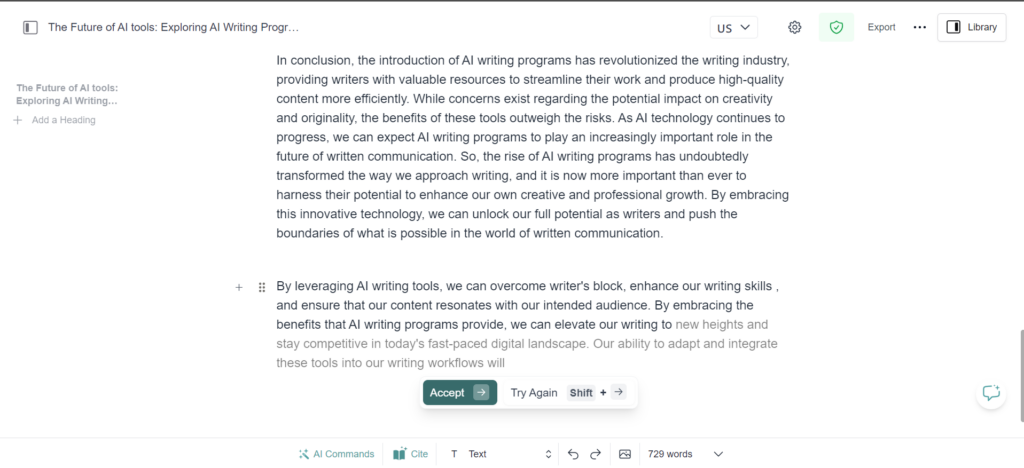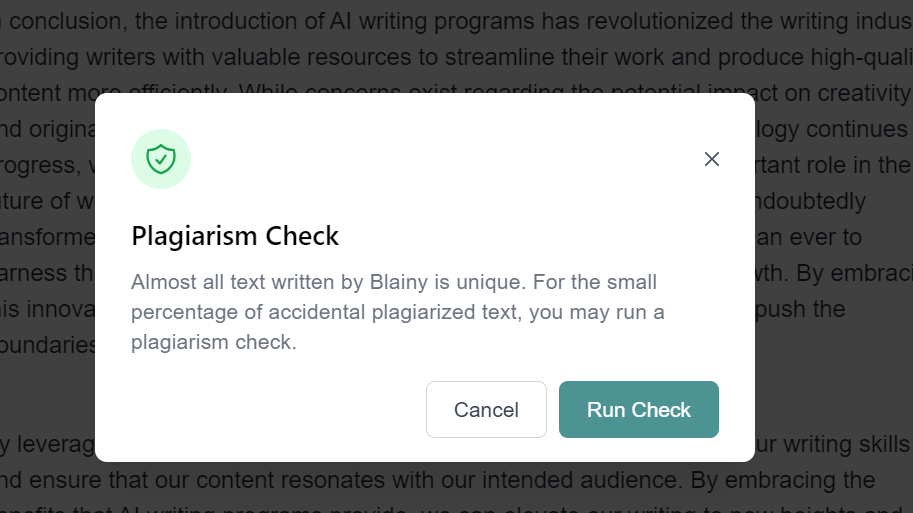
Evaluation essays are fundamental components of academic writing, serving as platforms for critical analysis and assessment across various subjects or topics. Through meticulous examination and reasoned judgement, students delve into the quality, significance, or value of the subject matter, often backed by evidence and critical reasoning.

Evaluation essays are like magnifying glasses for writers, helping them closely examine and judge various topics. Unlike essays that simply describe or argue, evaluation essays require a careful look and thoughtful opinions backed by evidence.
In these essays, students size up the quality, importance, or value of things like books, movies, artworks, policies, or performances. They set up specific standards to judge them, looking at what works well and what doesn’t.
The real power of evaluation essays? They’re all about giving solid, well-thought-out opinions. By digging deep and backing up their judgments with evidence, students get to flex their critical thinking muscles. Plus, they get to explore topics in a whole new light, making learning more engaging and exciting.
Evaluative essays are designed to fulfill the primary purpose of critically evaluating a subject, be it a literary work, a film, an artwork, or a policy. By articulating informed judgments and assessments grounded in thorough analysis and evidence, these essays nurture critical thinking and analytical prowess among students.
In the academic landscape, evaluative essays play a pivotal role by fostering deep engagement with course material, nurturing critical thinking skills, and honing effective communication abilities. Through the process of evaluating and critiquing diverse subjects, students not only contribute substantively to academic discourse but also demonstrate their capacity for nuanced understanding and analytical acumen.
A comprehensive grasp of the key components of evaluative essays is imperative for crafting persuasive and impactful arguments.
At the heart of every evaluative essay lies a robust thesis statement, serving as the compass that guides the reader through the terrain of analysis. This statement should lucidly articulate the primary argument or evaluation of the subject, providing a roadmap for the ensuing discourse.
Identifying and integrating specific evaluation criteria is paramount to conducting a thorough assessment of the subject matter. These criteria form the scaffolding upon which the evaluation rests, offering a structured framework for dissecting various facets of the subject.
The backbone of any evaluative essay lies in the judicious utilization of evidence and astute analysis to substantiate claims and sway the reader’s perspective. Drawing from reputable sources and employing rigorous analysis lend credence to arguments and judgments, elevating the overall persuasiveness of the essay.

A well-structured essay is essential for delivering arguments cogently and cohesively. From a clear introduction that sets the stage to body paragraphs that delve into nuanced analysis and a conclusion that synthesizes key insights, a meticulously organized essay ensures that the narrative unfolds logically and persuasively.
Clarity and coherence in writing are indispensable for facilitating reader comprehension and engagement. Employing concise and precise language, and ensuring logical flow from one idea to the next, fosters clarity and coherence, enabling readers to navigate the discourse seamlessly.
Embark on the journey of crafting compelling evaluative essays with a step-by-step approach that elucidates each stage of the process.
Selecting a topic that resonates with your interests and aligns with the assignment parameters lays the groundwork for a successful essay. Opt for subjects that evoke passion or elicit strong opinions to sustain motivation and engagement throughout the writing process.
Delve into subjects that pique your curiosity and hold relevance within the academic context. Choose topics that offer ample scope for analysis and evaluation, ensuring a rich and substantive exploration.
Once you’ve identified a broad topic, refine your focus to a specific aspect or dimension that warrants in-depth scrutiny. Narrowing the scope of your analysis ensures precision and coherence, fostering a more focused and impactful evaluation.
Robust research forms the bedrock of a well-informed evaluation, underpinning arguments with substantive evidence and insights.
Navigate a diverse array of credible sources, including academic journals, reputable websites, books, and primary documents. Discriminating between credible and unreliable sources is paramount, ensuring that your analysis is grounded in sound evidence.
As you traverse the landscape of research, meticulously document key findings, quotations, and references. Organize your notes methodically, categorizing them according to thematic relevance to facilitate seamless integration into your essay.
Crafting a compelling thesis
statement sets the trajectory for your evaluative essay, articulating the core argument of evaluation and providing a blueprint for the ensuing discourse.
Articulate your stance or evaluation of the subject matter with clarity and precision. A well-crafted thesis statement encapsulates the essence of your analysis, offering readers a succinct preview of the insights to follow.
Integrate specific evaluation criteria into your thesis statement, delineating the parameters upon which your assessment will be based. These criteria serve as signposts for your analysis, guiding readers through the evaluative journey.
Organize your essay in a manner that facilitates coherence and clarity, guiding readers through a systematic exploration of your arguments and insights.
Commence your essay with an engaging introduction that contextualizes the subject matter and outlines your thesis statement. Provide readers with a roadmap of the analysis to follow, piquing curiosity and setting expectations.
Craft cogent body paragraphs that delve into various aspects of your evaluation, each centered around a distinct theme or criterion. Commence each paragraph with a topic sentence that encapsulates the core argument, buttressing it with evidence and analysis to substantiate your claims.
Acknowledge and address potential counterarguments, enriching the depth and nuance of your analysis. By engaging with opposing viewpoints, you demonstrate intellectual rigor and bolster the persuasiveness of your evaluation.
Conclude your essay with a resounding synthesis of key insights, reiterating your thesis statement and underscoring the significance of your evaluation. Reflect on broader implications and avenues for future exploration, leaving readers with a lasting impression.
Embark on the iterative process of writing and revising, refining your prose and honing your arguments to perfection.
Translate your research and analysis into coherent prose, weaving together arguments and evidence to construct a compelling narrative. Focus on clarity and precision, ensuring that each sentence contributes meaningfully to the overarching thesis.
Subject your essay to rigorous revision, scrutinizing each paragraph for clarity, coherence, and logical flow. Ensure that transitions between ideas are seamless and that the narrative unfolds organically, facilitating reader comprehension.
Polish your essay to perfection, attending to grammatical errors, punctuation inconsistencies, and stylistic nuances. Strive for a prose style that is elegant yet accessible, maintaining a professional tone throughout.

Now let’s take a look at some examples. Remember, an evaluation essay is just one type of essay that can be generated using tools like Blainy. This AI-powered software can produce high-quality essays on any topic at impressive speeds. Here are some ideas to kickstart your assessment essay writing journey.
Unraveling Language’s Journey: From Simple Signs to Modern Speech
Introduction: Exploring Language’s Path
Language, our timeless narrator, shares stories across ages, from humble beginnings to today’s intricate dialogues. But how did we move from basic signals to global chatter? Let’s travel through history to uncover the fascinating evolution of language and its deep influence on our world.
Early Conversations: The Dawn of Communication
Imagine our ancestors huddled around fires, using gestures, grunts, and glances to convey tales and warn of dangers. Before words, communication sprang from simple signs, laying the foundation for the diverse languages we speak today. These primal exchanges weren’t just about survival—they formed the core of human connection, evolving into the rich tapestry of languages we know today.
The Writing Revolution: From Symbols to Scripts
Picture ancient humans etching symbols onto cave walls, giving birth to written language. Millennia later, civilizations like the Egyptians and Mesopotamians carved their narratives into stone, forever changing how we communicate. Hieroglyphs and cuneiform evolved into alphabets, empowering individuals to preserve thoughts and discoveries. Writing bridged the gap between past and future, uniting generations through ink and parchment.
Language Across Time: From Ancient Tongues to Modern Conversations
Over centuries, languages adapted, shaped by culture, conquest, and curiosity. From the poetic rhythms of ancient Greek to the melodic tones of Mandarin, languages echo the stories of civilizations past. As empires rose and fell, tongues merged and transformed, creating a vibrant tapestry of communication. In our interconnected world, languages blend and fuse, fostering new connections and understanding.
Decoding Language: The Science of Speech
Behind the scenes, linguists unravel language’s secrets, exploring its complexities and evolution. Linguistics, the guardian of speech, delves into phonetics, morphology, and syntax, uncovering the mysteries of human communication. Like daring explorers, linguists sift through sounds, structures, and patterns to reveal language’s past and present.
Conclusion: Celebrating Language’s Impact
As we conclude our exploration of language’s evolution, let’s marvel at the power of words. From ancient whispers to modern discourse, language has shaped our world and guided our journey. Let’s embrace the diversity of languages that enrich our conversations, connecting us across borders and cultures. For language isn’t just a tool—it’s the heartbeat of humanity, pulsating with the rhythm of our stories and dreams.
How Technology has Transformed Education: From Traditional Classroom to Interactive Learning
Introduction: The Dawn of a New Learning Era
Enter the realm of education’s digital revolution, where traditional classrooms
yield to the dynamic landscapes of cyber learning. In this journey, we uncover the profound impact of technology on education, where students embark on captivating adventures of discovery.
Embracing Digital Waves
Gone are the days of dusty chalk and static lessons. Today, students are greeted by glowing screens and interactive tools that transform learning into an exhilarating voyage. With laptops, tablets, and smartboards at their fingertips, they set sail on a journey of exploration and engagement.
Kindling Curiosity with Tech
At the core of this transformation lies the ability to spark curiosity. Technology acts as the catalyst, igniting flames of inquiry and exploration in young minds. Through immersive apps, virtual simulations, and interactive multimedia, students embark on thrilling quests for knowledge.
Tailored Learning Paths
In this digital age, education becomes personalized. Technology crafts individual pathways to learning, catering to the unique needs and interests of each student. Adaptive algorithms and custom exercises ensure that every learner finds their stride on the path to success.
Education Beyond Borders
The digital revolution knows no bounds. Online courses and virtual classrooms transcend geographical barriers, offering students from all walks of life access to quality education. From bustling cities to remote villages, technology democratizes learning, opening doors to endless possibilities.
Empowering Educators as Pioneers
Behind every educational journey stands a dedicated educator. Technology empowers teachers as pioneers, equipping them with the tools and support needed to create dynamic and engaging learning experiences. Through digital resources and collaborative platforms, educators inspire and uplift their students.
Navigating Challenges
While the digital frontier presents boundless opportunities, it also poses challenges. From concerns about equity to privacy considerations, educators and policymakers must navigate these waters with care. By fostering collaboration and innovation, we can overcome obstacles and chart a course towards a brighter future for education.
Charting a Course for Tomorrow
As we sail towards tomorrow, the horizon of technology in education stretches endlessly. Virtual reality excursions, AI companions, and augmented reality adventures await. By embracing innovation and leveraging technology’s power, we steer towards a future where every learner embarks on a voyage of discovery.
In conclusion, the digital revolution in education has ushered in a new era of learning, where students navigate captivating seas of knowledge and discovery. Let us embark on this journey with courage and creativity, ensuring that every learner has the opportunity to set sail on their own educational adventure.
In the modern era, harnessing the power of AI writing tools can elevate your essay-writing experience. Platforms like Blainy offer a range of features designed to streamline the process and enhance the quality of your work.
AI writing tools often come equipped with auto-suggestion features. This means as you type, the tool can provide real-time suggestions for words, phrases, or even entire sentences. It’s like having a writing companion offering instant input, making your essay more fluid and engaging.

One of the challenges in essay writing is handling citations. AI writing tools simplify this task by automatically generating citations based on the specified citation style (APA, MLA, Chicago). This ensures your essay maintains academic integrity without the hassle of manually formatting references.

Enhance the visual appeal of your essay by seamlessly integrating relevant images. AI tools like Blainy allow you to insert images directly into your document, providing a visual dimension to support your arguments or illustrate key points.

AI tools excel in paraphrasing, offering an efficient way to rephrase sentences while maintaining the original meaning. This capability adds a layer of sophistication to your writing, reducing redundancy and increasing the overall quality of your essay.
Say goodbye to grammatical errors and inconsistent writing styles. AI writing tools continuously analyze your text, providing real-time suggestions for improving grammar, punctuation, and overall writing style. This ensures a polished and professional final product.

By incorporating AI writing tools like Blainy into your essay-writing process, you not only simplify the task but also elevate the quality of your work. Embrace the future of writing assistance and witness the transformation in your essay-writing experience.
In conclusion, mastering an evolutionary essay not only enhances your critical thinking and analytical skills, but also allows you to communicate complex ideas effectively. By following the five easy steps outlined in this guide, you can create a compelling and well-structured essay that thoroughly explores the chosen topic, clearly supports your arguments, and convincingly demonstrates your understanding. As a result, your essay will not only stand out but also appeal to a wide range of readers. So, go forth and write an exemplary evolutionary essay!
Q: What are some common mistakes to avoid in evaluative essays?
A: Common pitfalls include succumbing to personal bias, relying on unsubstantiated claims, and overlooking alternative perspectives.
Q: How can I ensure objectivity in my evaluation?
A: Strive to ground your evaluation in empirical evidence and reasoned analysis, acknowledging and engaging with diverse viewpoints along the way
Q: Is it acceptable to include personal opinions in evaluative essays?
A: Personal opinions can enrich the evaluative process, provided they are substantiated by evidence and aligned with the evaluation criteria.
Q: How long should an evaluative essay be?
A: Aim for a length that affords comprehensive coverage of the subject matter while maintaining reader engagement and coherence.
Q: Can I use first-person pronouns in evaluative essays?
A: Yes, but exercise discretion and ensure that their usage enhances rather than detracts from the credibility of your analysis.
The step-by-step guide and examples provided should have equipped you with the skills necessary to write a successful evaluation essay. However, crafting the perfect essay isn’t a simple task; it demands practice, patience, and experience.
Incorporate Blainy into your academic journey to revolutionize your writing experience. This advanced AI writing tool is designed to assist with a range of academic writing projects. With Blainy, you can confidently tackle essays on any topic, easing your writing tasks considerably. Don’t hesitate to register with blainy.com today! Discover a world of writing opportunities and take your essay writing skills to new heights!
Zain Ul Abadin